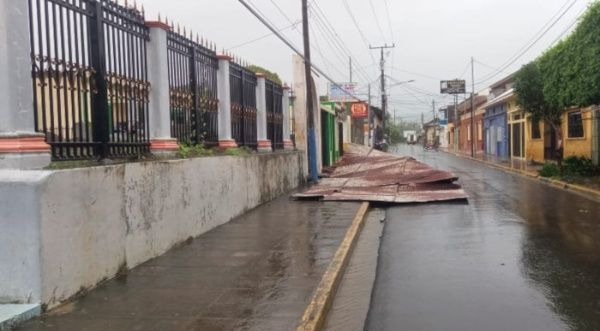
Experts have reported that Tropical Storm Bonnie's crossing over into the Pacific is a rare event. Bonnie is the earliest known crossover on record. Jul. 02, 2022. | Photo: @Wx_Goddess
Managua, July 2 (RHC)-- The eye of Tropical Storm Bonnie has left the Nicaraguan mainland and is moving into the Pacific Ocean, where it is expected to become a hurricane, while flash floods and mudslides are expected over parts of Nicaragua and Costa Rica over the weekend.
The Pacific coast of El Salvador, Guatemala and southern Mexico should monitor the progress of this system, warned the U.S. National Hurricane Center (NHC). Tropical Storm Bonnie, the second tropical cyclone this year in the Atlantic, has dumped heavy rains in Nicaragua and Costa Rica.
Bonnie's maximum sustained winds remain near 65 kilometers per hour with stronger gusts and a gradual strengthening is forecast after Bonnie emerges over the eastern Pacific late Saturday and should continue through Tuesday next week.
In Nicaragua, the director of the National System for the Prevention, Mitigation and Attention to Disasters (SINAPRED), Dr. Guillermo González, emphasized the actions that have been taken for the areas of Bluefields and San Juan.
He indicated that reports indicate that in these areas there have been light to moderate rains and drizzles, which have been catalogued in the normal range. "In some moments there have been some gusts of wind, but in general, the situation is quite calm," he said.
The phenomenon made landfall south of the mouth of the San Juan River, crossed Lake Nicaragua and impacts the isthmus of Rivas.
Saturday morning, Bonnie hit the southern zone with strong winds and torrential rains. There are trees down in the area between La Virgen and Sapoá and the roofs of several houses have come off. The area is currently without electric power.
Tropical Storm Bonnie has left some floods and fallen trees in its passage through Nicaraguan territory. The department of Rivas in the south of the country is one of the most damaged.

